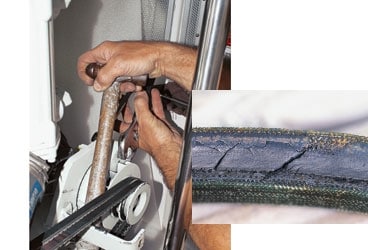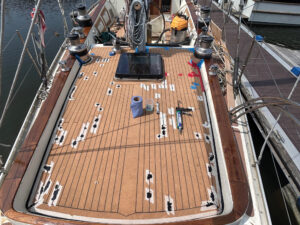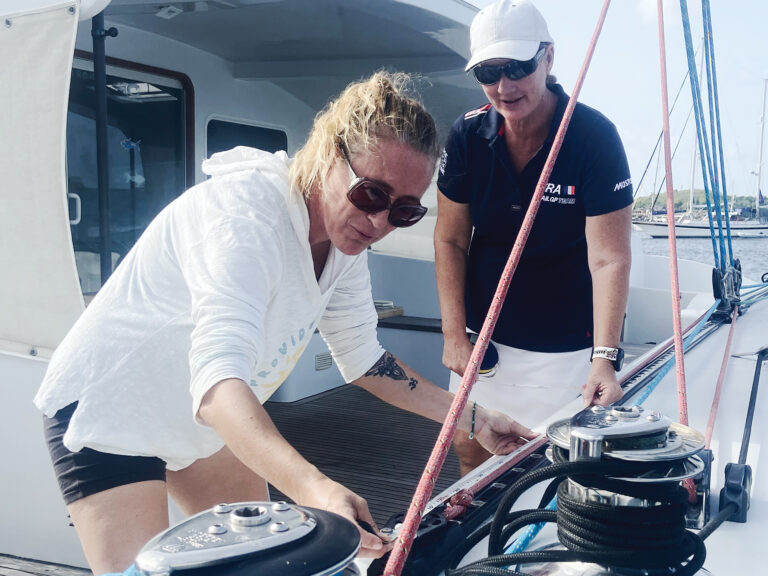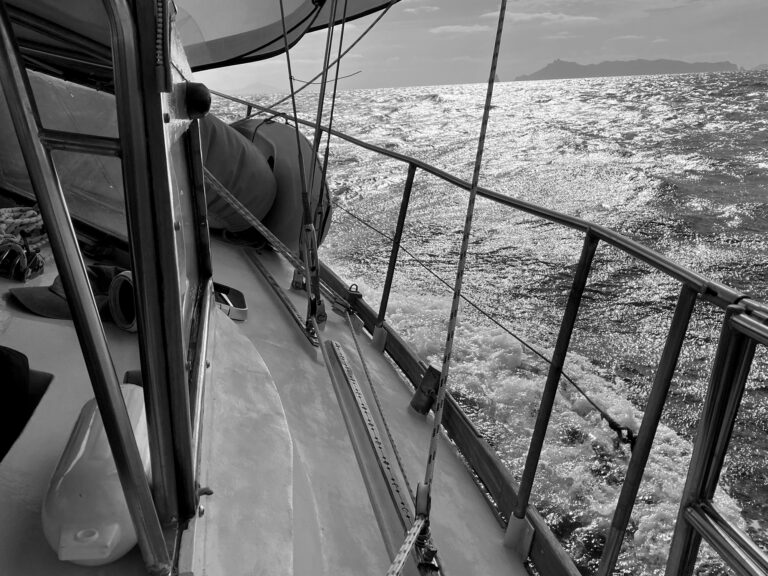
engine belts 368
The belts that drive your engine’s accessories-the raw-water pump, the circulator pump, and the alternator-will typically provide reliable, trouble-free service if they’re properly maintained and replaced when worn out. But often cruisers neglect this important component until it’s too late.
Once a belt breaks, the systems it drives literally grind to a halt. The raw-water pump stops pumping seawater, the circulator pump stops circulating coolant, and the alternator won’t produce electricity any longer.
While you may not immediately notice the absence of an alternator, you’ll quickly become aware of the loss of seawater and coolant as the temperature gauge climbs into the red and the overheat alarm sounds (your engine is equipped with operating versions of both of these instruments, right?).
The belts used to power these accessories are usually of the V variety, although the flat, ribbon-shaped serpentine belts found on large marine diesels are starting to turn up on smaller sailing auxiliaries. Often, one V belt may do double duty, sending power from the crankshaft pulley to both the alternator and circulator pump, while another belt will help the raw-water pump do its thing. One serpentine belt, on the other hand, will typically operate all accessories.
To give you an idea of the energy that a belt may have to transfer from the engine to another motor, a high-output alternator of 125 amps will require-after allowances are made for friction and electrical inefficiencies-roughly 5 or 6 horsepower, all carried by the belt or belts. Generally speaking, conservative installations will resort to double belts when amperage exceeds 100 amps.
Fortunately, ordinary V belts are, with a little knowledge, easily serviced, adjusted, and replaced.
Begin by inspecting your engine’s belts. How tight should a belt be? Without a tool for measuring this, the answer will be subjective; however, as a guide, adjust belts so they’re tight enough not to slip, but no tighter.
If a belt is slipping, it won’t turn its related accessory properly, and it’ll wear out and break prematurely. If it’s too tight, it will accelerate wear on bearings and seals.
How do you know when the tension is right? If you see any evidence of belt dust on the front of the engine or on the alternator casing and fan (it’s so fine and “oily” that it’s often mistaken for an oil leak), then the belt is slipping because it’s too loose or misaligned. If the belt and/or pulley show signs of glazing-exhibiting a particularly smooth, shiny appearance-it’s also an indication that the belt is slipping. A glazed belt must be replaced, but the glaze on a pulley can be broken or “dressed” using 220-grit sandpaper.
To tension an alternator, refrigeration compressor, or water-pump belt, use the handle of a hammer as a lever to pry the accessory away from the crankshaft pulley, then tighten the fixing bolt that holds it in place. Threaded “spreader” tools are available to make this task easier, and some aftermarket high-output alternator installations incorporate this into their design. Finally, ensure that each belt’s profile properly matches the pulleys over which it turns. The belt should be even with-or stand slightly proud, no more than 1/16th of an inch, of-the top of the pulley walls.
Belts are relatively inexpensive, so it’s cheap insurance to replace them every two years or 400 hours, whichever comes first. Remember, a new belt may require adjustment and tensioning several times in the first 50 to 100 hours of use.
Steve D’Antonio is a regular Cruising World contributor who offers services for vessel owners, boatbuilders, and others in the marine industry through Steve D’Antonio Marine Consulting (www.stevedmarineconsulting.com).








